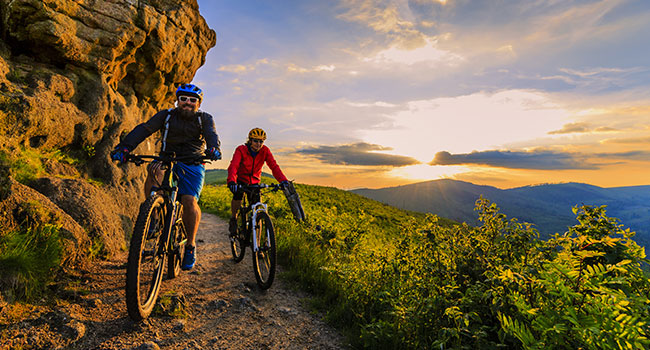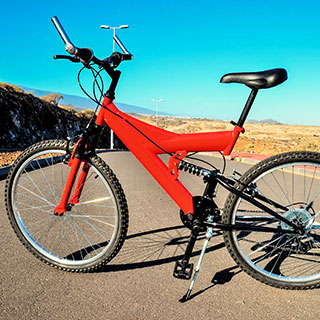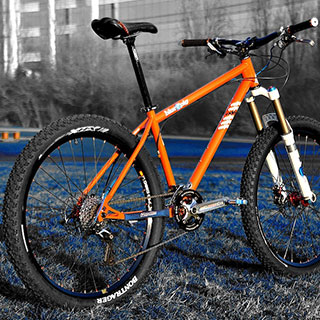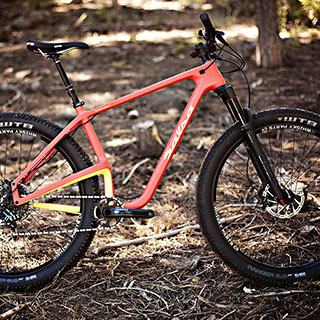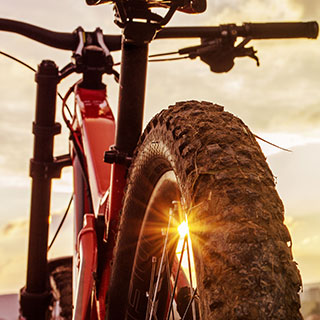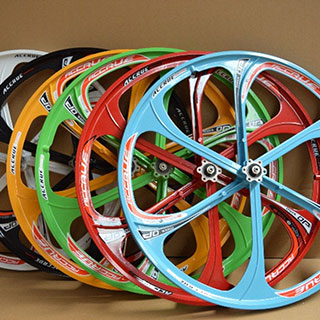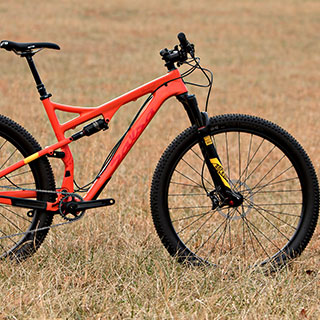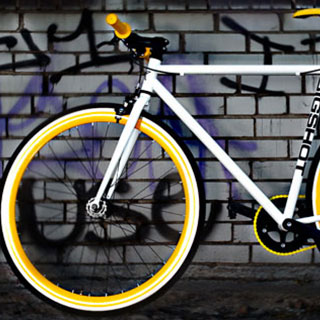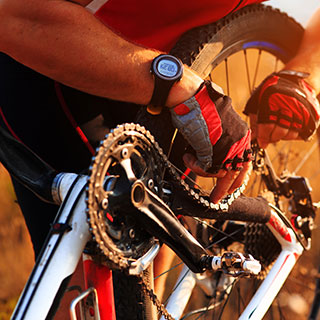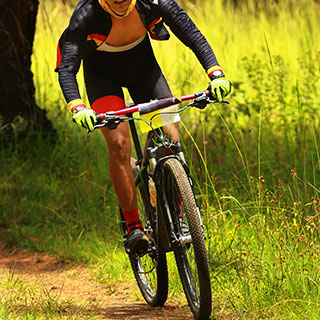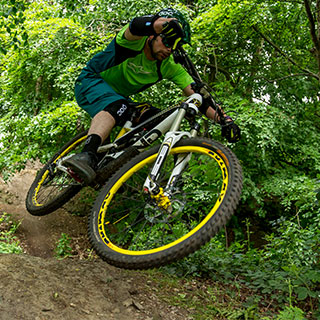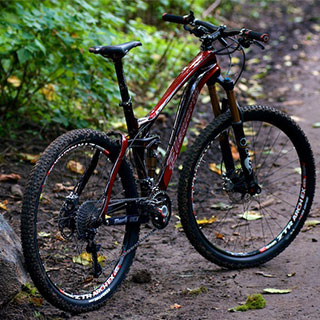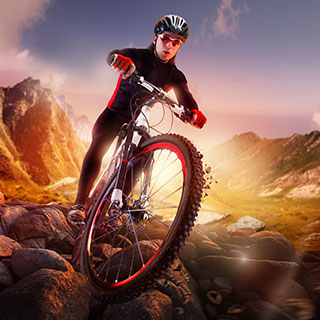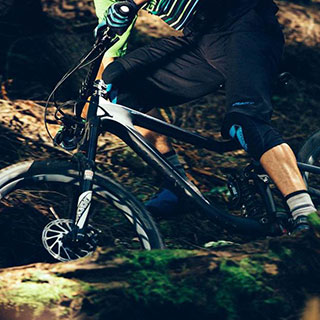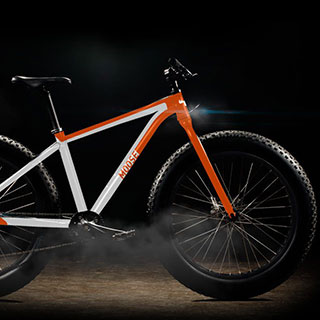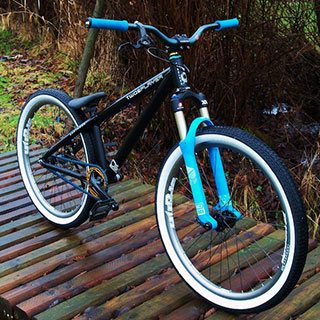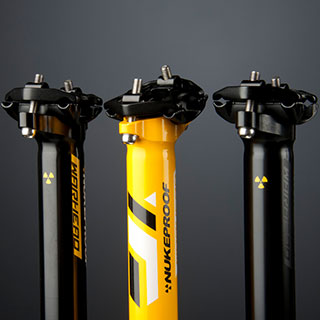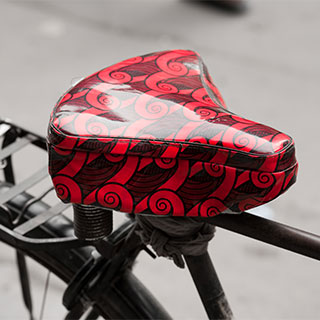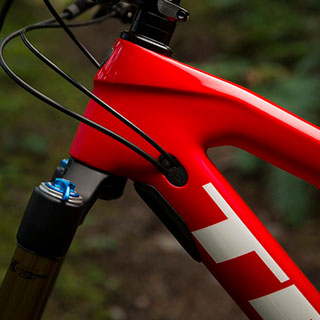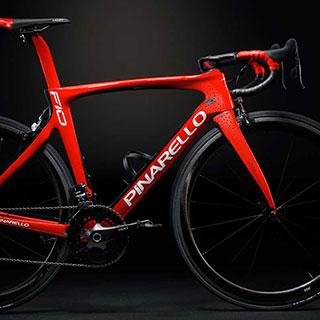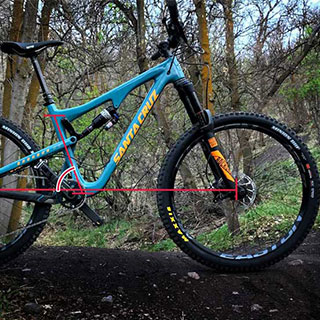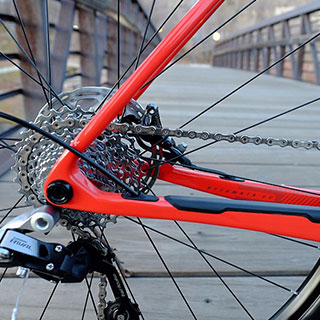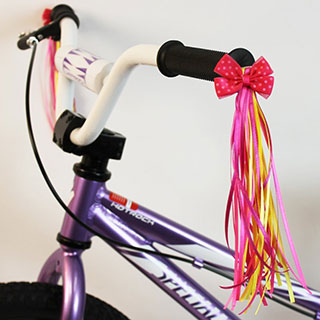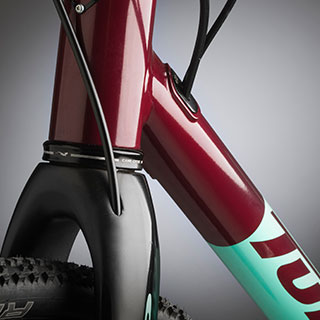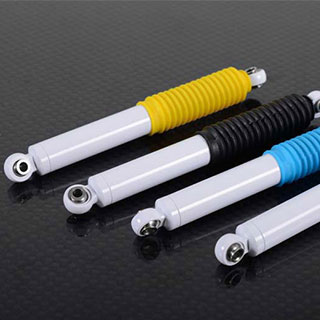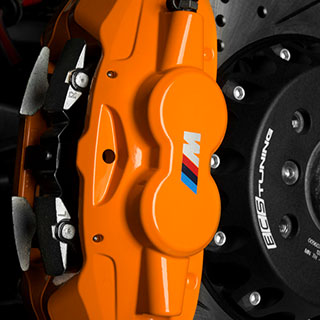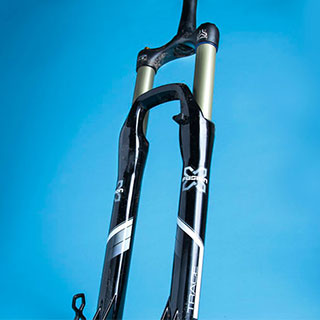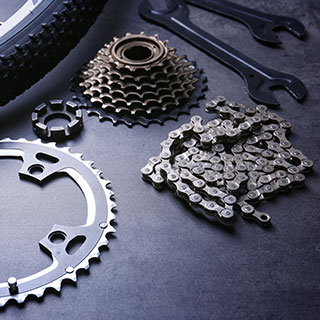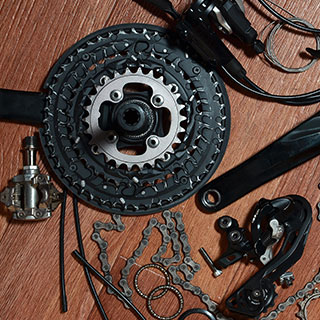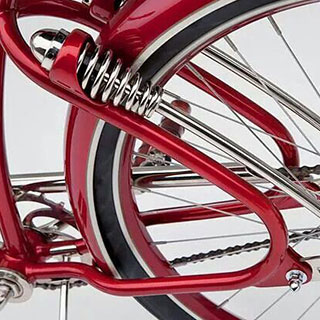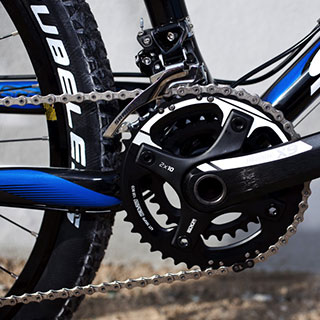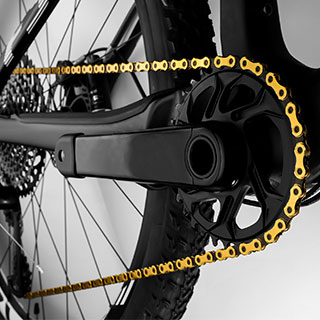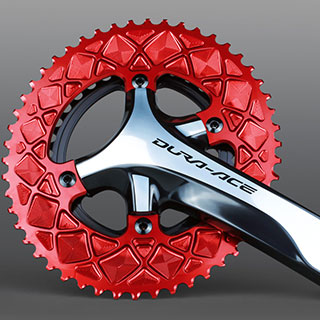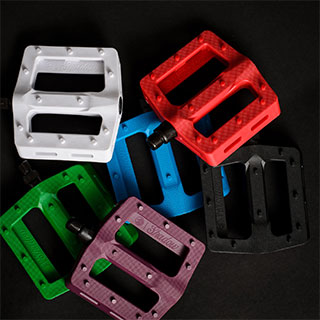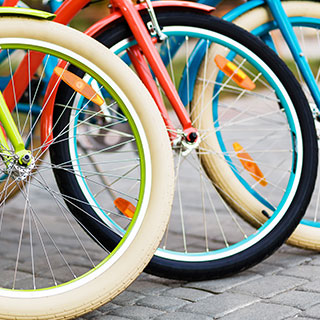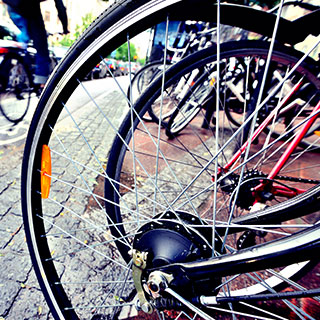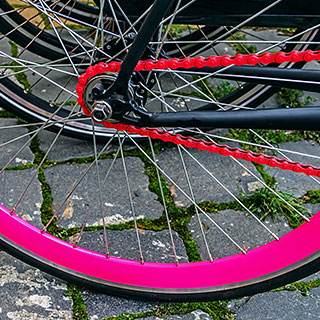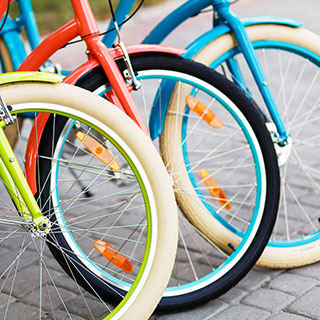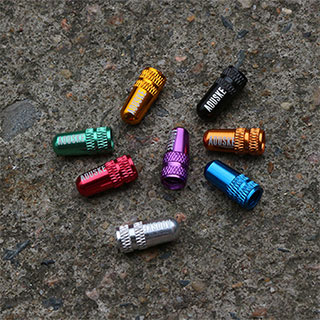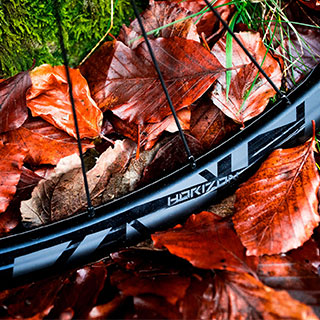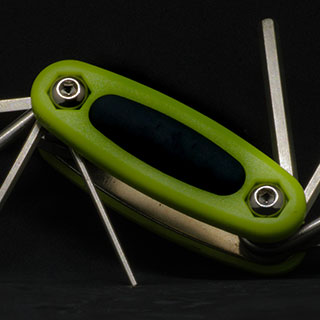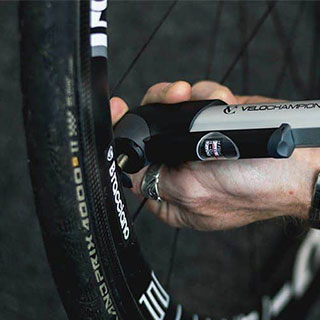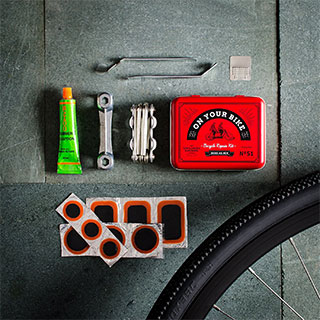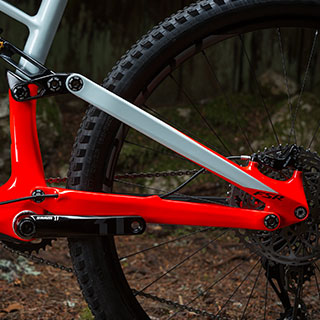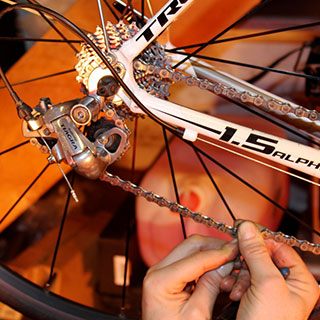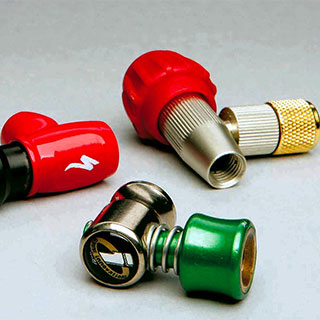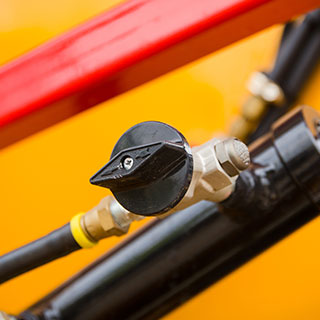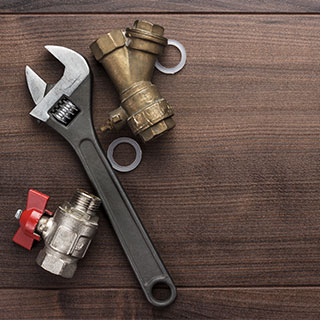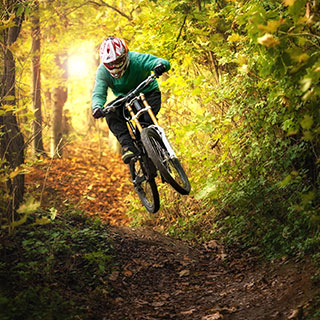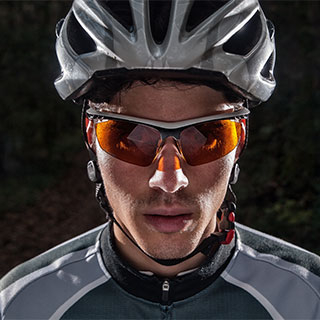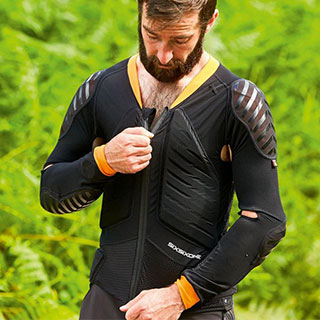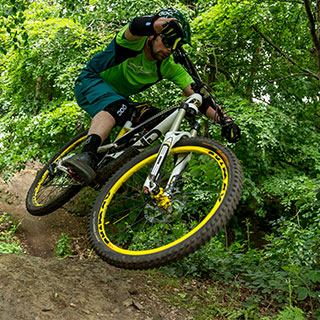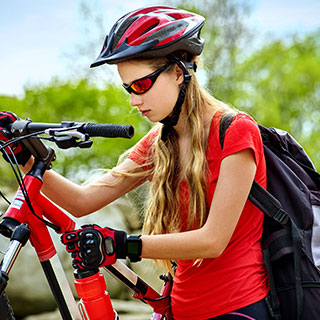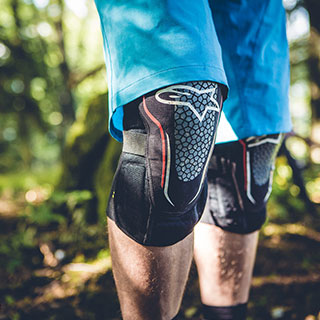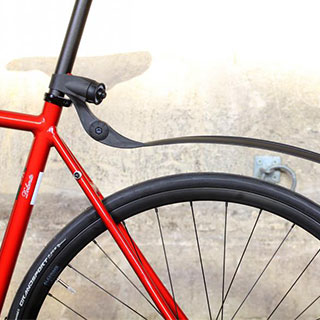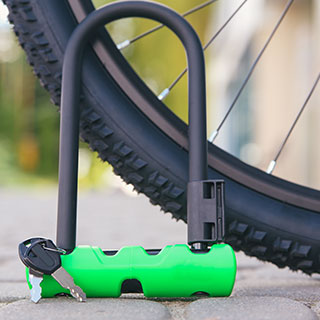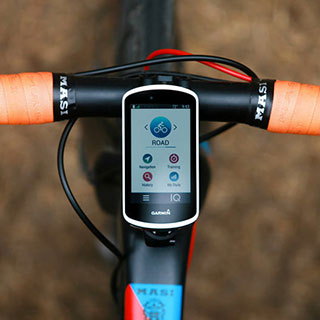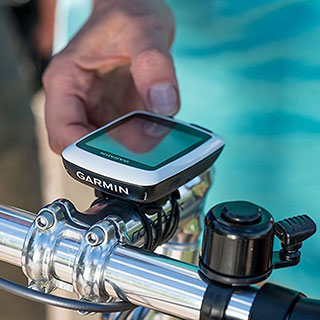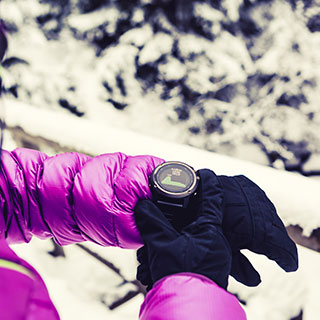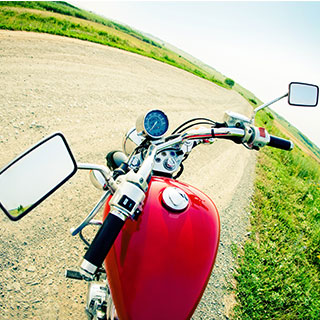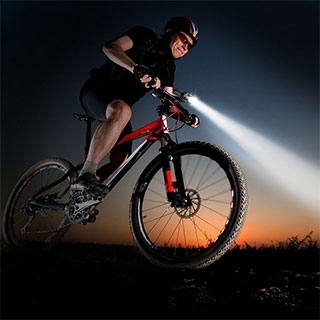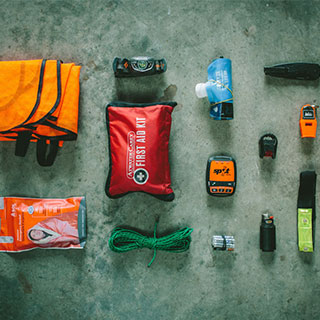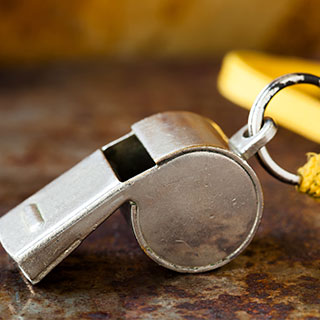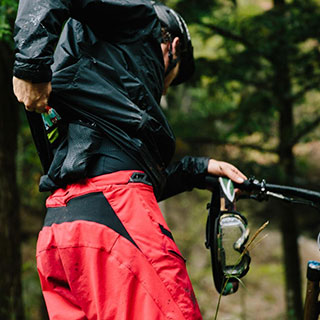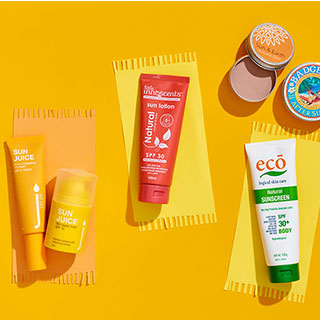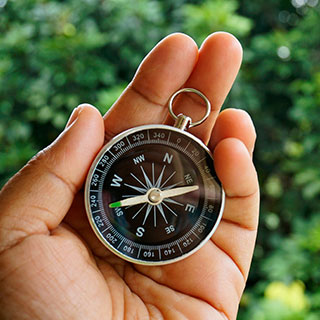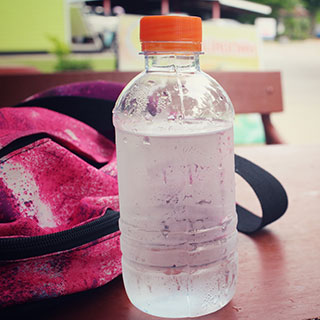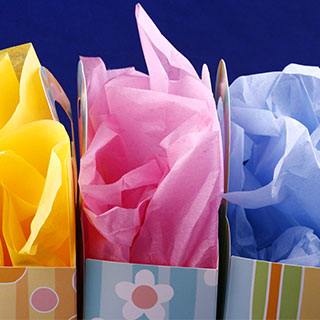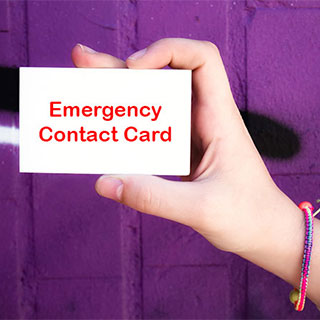If you’re a mountain biking enthusiast then selecting the right mountain bicycle for you is very important. You have to consider a lot of things, such as mountain bike parts & gear. Selecting the right mountain bike parts & gear can be tricky, so you have to think about every part of the bike from the wheels to the breaks, to safety and personal items and more. If all of this seems daunting, then read on and think about what you need in a mountain bike. It’s not as challenging as it seems once you know exactly what you need.
AT A GLANCE
What to Consider before Selecting the Best Bike for You?
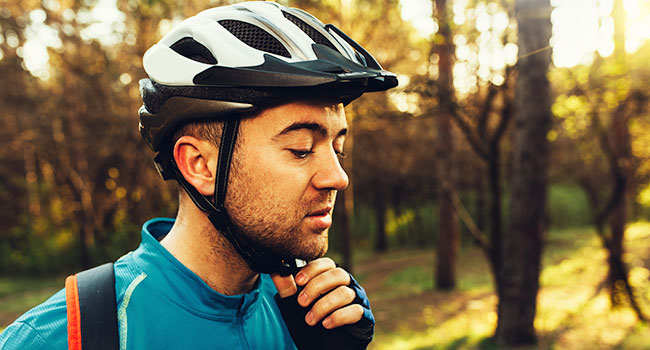
In order to pick the right mountain bike for you, you have to consider certain aspects of the bike. There are a lot of parts and gear you have to think about. First, do you want full suspension or hardtail? You also need to take the wheels and tires into consideration. Then there are the gearing and brakes. In addition, you have to think about the frame materials. All of these mountain biking parts & gear are important. Selecting the right mountain bike can seem like making a lot of choices, and it is. But with this guide, things will seem much simpler.
1. Full suspension or hardtail:
Full suspension mountain bikes have shocks at the front and the back for an easier ride. These bikes are heavier than the hardtail bikes. They also cost more than the hardtail bikes, if you want a good one. However, they will not only reduce fatigue, but will also be a more comfortable ride for you. Full suspension bikes also offer better control at higher speeds on rough
iiHardtail
Hardtail bikes have shocks only in the front, which means that they will only reduce shock to the upper body. Unlike the full suspension, they aren’t meant to go as fast on rough ground. You may tire more easily and get more shocks to your lower body. However, they do help keep your hands on the handlebars. They also make steering much easier on the
2. Wheel & Tire:
The 29” wheels have become more popular recently. 29ers are slower to get going, but should be faster when going uphill. They have more momentum and roll over smaller objects more easily. They’re great if you’re a taller person because they make the bike bigger. 29ers also offer a fast speed. In addition, they offer a wonderful traction, which is great for wet
The 27.5” wheels are a newer wheel and they are smaller at the midway point than the 26” and the 29.” The 650b wheels are the best choice for taking corners. They turn quickly and easily. They’re nimble and strong. They have little to no adjustment period. The 27.5” wheels are great for longer traveling. The smaller wheels are great for shorter riders too.
iii26” Wheels
26” wheels are the standard size for most mountain bikes. They used to be the only wheel size available for bikes until the other sizes came along. These wheels are supposed to be faster for downhill riding. This is due to physics. If riding quickly is your aim, then the 26” wheels are your pick. However, now the standard size isn’t as easy to find as the other sizes.
Plus-size wheels add height to the bike, which is great if you’re tall. The increased volume gives better rollover. It’s comparable to the 29.” The traction as well as stability is better as well. The larger size gives awesome cushioning for a much smoother ride over bumps. The tread is less aggressive than the other wheels, making them faster. If you want to go quickly up
The Shimano XT (M8000) brakes have IceTech vented pads which help keep them from overheating. Servo-cam action keeps pads from over rubbing. They’re a little less sensitive than other brakes but they’re very reliable. Sram brakes have an aluminum piston interface. They’re consistent and reliable. The Swinglink cam in the lever gives a quick response. The Sram
The steel frame is the most common framing material used in mountain bikes. Two types of steel are used in mountain bikes: chromoly and high-tensile steel. High-tensile steel is longer-lasting and stronger. Chromoly is lighter. Steel is the least expensive. Aluminum is also used. It’s lighter than steel. It tends to be larger than steel in diameter. It’s also stiffer than
Types of Mountain Bikes
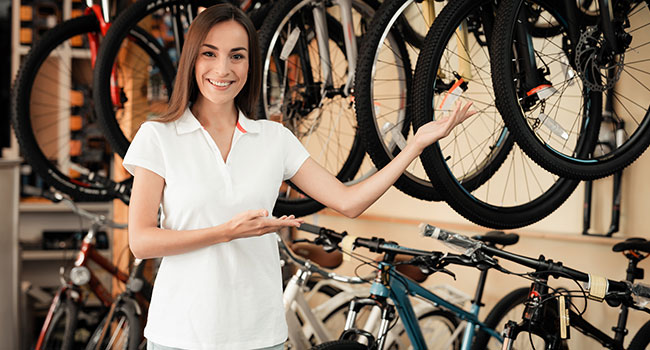
Word Count: 150-250 Words per section (i.e headings mentioned in 1,2,3… etc)
& Provide a short description for the subheadings mentioned in i, ii… in 3 or 4 lines (sentences).
1. Cross country mountain bikes
Cross country mountain bikes, or XC bikes, are very common bikes. They’re the ones you see most commonly in the stores. They’re made for speed and they are usually lightweight. Their cost ranges from reasonable to very expensive. They tend to be the most popular bikes on the market. Easily recognized, cross country mountain bikes are available in any biking store you go to. These bikes are the bikes you want if you’re going to go riding anywhere on trails or mountains. The cross-country mountain bike is a good choice for even the beginning rider, though the cost may influence which bike you choose. If you’ve never ridden a cross-country mountain bike before, you may want to start with a cheaper version and then trade it in for a more expensive one later on. You have to think about what you want to do with it, whether you want a quick bike for racing or a trail bike for riding on trail and mountains.
The cross-country race bikes are fast. They’re also efficient. In addition, they’re the most lightweight bikes on the market. They’re easy to accelerate on. They’re meant for a quick turning, but not jumping.
The cross-country trail bikes are heavier than the race bikes. They’re built to ride on trails. They can also take mountains.
The enduro mountain bike has a sturdier frame. It also has a bigger suspension. It makes downhill rides easier and still gets you uphill faster. However, the pedaling is tougher. Jumps and drops will be easier on the Enduro. The bars are wider, giving you a greater degree of control. Power assisted steering is also a feature on this bike. The frame is lower which gives
Downhill mountain bikes have it in the name – they’re meant for going downhill at top speeds. The gears are set high and large. This makes them perfect for pedaling over the toughest courses. The tires and rims are wide. The gears and frame are meant to hold up well under pressure. The downhill mountain bikes also have disc brakes. The chain guard keeps the chain in
Freeride mountain bikes are similar to the downhill mountain bike. The Freeride mountain bike is lighter than the downhill mountain bike. The frame is more compact, making maneuvering easier. Jumping and technical stunts are the main purpose of these bikes. The frame is more flexible. They’re a cross between XC bikes and downhill bikes. Their tubes are thick,
Fat bikes used to be a fad, but the reviews are in and now they’re a real-life mountain bike. Many people consider them a good mountain bike. They have over-sized rims and tires. They’re designed to cover soft ground, such as snow, mud, and sand. The Fatboy bikes seem to float over surfaces like these where other mountain bikes would sink right down.
Dirt Jump or Street Mountain Bikes are a cross breed between the Freeride and BMX bikes. Known as urban or street mountain bikes, they are not a bad bike if you want a bike that can do stunts. They have suspension in the front only, with a tiny bit of rear suspension, so they’re meant for doing stunts in the air. They tend to have only single speed gears and one
Parts & Components
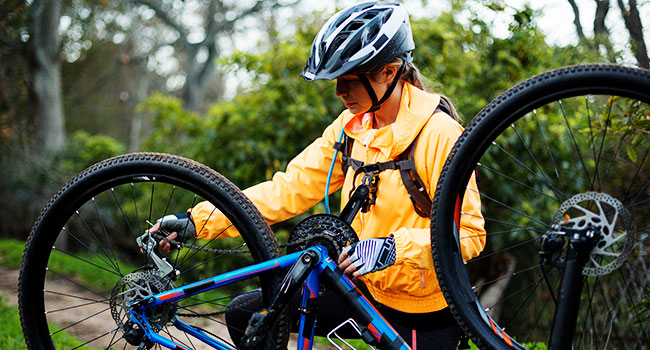
1. Saddle Area:
The saddle area is where you sit. This part is comprised of the seatposts and saddles.
The seatposts on a mountain bike are the poles that hold the saddle in place. The standard size is 27.2mm. They also come in 30.9mm or in the oversized 31.6mm. It’s important to have the correct size seatposts for your saddle so that your ride is comfortable and the seatposts are strong enough to hold your saddle size in place.
iiSaddles
The saddles on your bike are your seats. In order to be comfortable on your saddle, you have to measure yourself. Saddle widths vary from 126mm all the way to 179mm. They also come in three different shapes: flat, semi-curved, and curved. The shape of your saddle depends on your comfort and what kind of riding you do. Try all three to see which one suits you the best.
2. Frame
The frame is the body of the bike. It encompasses the top and down tubes, the seat tube and stay, and the chainstay.
The top tube is the crossbar on a bike. It connects the top of the seat tube to the top of the head tube. It sits parallel to the ground. It slopes down toward the seat tube. Certain cables, including the rear brakes, are routed through the top tube. In mountain bikes, the derailleur cable also is inside the top tube.
The down tube attaches the bottom bracket shell and the head tube. In mountain bikes, the derailleur cables go lengthways, or sometimes within, the down tube. The part that holds your water bottle also sits on the down tube. Sometimes small air pumps also may also sit on the water bottle part. The down tube is important for all of these reasons and it helps hold
The seat tube holds the seatpost. The height of the saddle is determined by how deeply the seatpost is put into the seat tube. With certain bikes, there is a braze-on mount for a bottle cage or front derailleur. The seat stay connects the rear fork dropouts to the seat tube.
The chainstay connects the rear fork ends (dropouts) to the bottom bracket shell. The rear derailleur cable runs along the chainstay if it runs along the down tube. There are times when the disc brakes will also be put here. Tapered or untapered tubing is used to make the chainstay. To allow clearance for the foot, the wheel, and crankarms, they may be ovalized,
3. Front Set
The front set is the front of your bike. It holds the handlebars, head tubes, shock absorber, front brakes, and fork.
The handlebar or grip of a mountain bike is the steering mechanism. It’s like a steering wheel in a car. The handlebar also supports the rider’s weight, depending on the riding position the rider is in. It also is a mounting place for such things as the brakes, bells, shift levers, cyclocomputers, etc. It is attached to a bike’s stem.
The head tubes hold the headset. This is the bearings for the fork. Cartridge bearings communicate directly with the surface on the inside of the head tube in an integrated head tube. They communicate with cups pressed into the head tube in a non-integrated head tube. The head tube slopes downward toward the ground.
A shock absorber does exactly what it sounds like – it absorbs shocks. It’s mechanical or hydraulic. It uses kinetic energy. It does this by taking the shock and changing it into another form of energy, usually heat. Most shock absorbers are either mon-tube or twin-tube. There are variations on the two.
The front brakes stop the wheels from turning in the front. They act as a brake only in the front. They stop the bike by stopping the wheels from going in the front. Front brakes are important because they can stop a bike instantly from going by stopping the front wheels from turning. However, they don’t
vFork
The fork grips the front wheel. Two blades are met at the front by what is known as the fork crown in a fork. On top of the crown, a steerer tube fastens the fork to the rest of the bike by the handlebars, letting rider steer. Dropouts hold the wheel at the lowest point of the fork. Either a skewer passes through an empty axle holding it to the fork or the axle is bolted
4. Rear Set
The rear set is the back of the bike. This includes the rear brakes, cogset, rear derailleur, and rear suspension.
The rear brakes sit in the back of the wheel and stop the back wheel from turning. They only stop the back wheel. Rear brakes are important because they stop the back wheels instantly from turning, thus stopping the bike. They do not, however, work on the front wheels. They only stop the back wheels. The rear brakes are only meant to stop the back wheels.
iiCogset
The cogset, also known as the cluster, is a set of multiple sprockets. It connects the rear wheel to the hub. It works with a rear derailleur to give multiple gear ratios to the bike rider. There are two kinds of cogsets: cassettes or freewheels. Cassettes are newer. The freewheels are single or set of sprockets mounted on a body. This contains an internal ratcheting
The rear derailleur moves the chain between sprockets. It also takes up chain slack. It does this by moving to a smaller sprocket at the rear. It may also do this by moving to a smaller chainring by the front derailleur. If it’s doing the latter, it is set in the path of the bottom, slack part of the chain. There are times the rear derailleurs are used as chain tensioners for single
Although uncommon, the rear suspension is a thing. A suspension is a system that suspends the rider over the toughness of the course. It’s generally used on mountain bikes. If a bike has rear suspension, it generally also has front suspension. These bikes are called dual suspension, or full suspension, bikes. Recumbent bikes are the exception with rear-only suspension.
5. Paddling Area
The paddling area is where the pedals and other important peddling features sit. It is the part of the frame where the front derailleur, the chain and chainring, and pedals and cleats are located.
The front derailleur has a different job than the back derailleur. It has to move the chain from side to side between the front chainrings. This has to be done with the top portion of the chain. It needs to have capacity for many different chainring sizes. The teeth run from as many as 53 to as few as 20.
iiChain
The bike chain is what makes the bike go forward. It takes power from the pedals and gives it to the drive-wheel. Most are made from alloy steel or plain carbon. Sometimes they are nickel plated to prevent rusting. The chains come in different sizes, length and width. This will depend on your bike and the speed at which you want to go.
The chainring moves power to the wheels. Usually, it’s the rear wheel that they move power to. They’re also called chain wheels or sprockets. Generally, they have teeth spaced to take in every link of the chain as it passes over them. However, there have been designs where the chainring had one tooth for every other link of the chain.
Pedals are the parts of the bike that the rider pushes on with his/her foot to make the bike go forward. The foot moves the cranks, which turns the bottom bracket spindle, making the bike’s wheels turn. Cleats are specialized shoes that work best for cycling. They’re designed to grip the pedals. You have to match them up with your pedals.
6. Wheel Area
The wheel area is where your wheels sit. It encompasses the spokes, hub, rim, tires and tubes, and the valve.
Spokes are what connect the hub to the rim. They sit under tension. One end of the spoke is threaded with a nipple which connects the spoke to the rim. The tension is adjusted at the rim end. Single-butted spokes are thicker at the hub and thinner at the rim. Double-butted spokes are thinner over the center. They are more elastic, aerodynamic, and lighter. Triple
iiHub
The hub is the center part of the bike wheel. It has the bearings, axle, and hub shell. The hub shell is where the spokes are attached. Hub shells can have free bearings or can be one piece. In the case of one piece, they have press-in cartridges. The freehub is build into the hub. This allows the rider to coast.
iiiRim
The rim is a metal circle made of carbon fiber composite. Some bikes use an aerodynamic carbon hoop for the rim. The rim holds the tire. Some rims are meant for rim brakes. This makes for a smooth brake. Rims are also used for disc brakes or hub brakes, but the braking on these isn’t as smooth.
Tires fit on the wheels of a bike. They provide suspension. They are necessary for balancing, turning, propulsion, and braking. They are attached to the rim by three techniques: wired, tubular, and clincher. There are also tubes in the tires. A separate tube made of latex or butyl rubber is what is used inside. It’s an airtight barrier. On many mountain bikes, tubeless
The valve is the part of the bike that lets air into the tire. It automatically closes when air has been let in. After it’s been closed, it is kept sealed by the pressure in the tire. This prevents the air from escaping. This way, the air can be pumped in, the mechanism for pumping the air can be taken out, and the valve can be sealed off again. Presta and Dunlop valves are commonly used on bikes.
Mountain Biking Gears
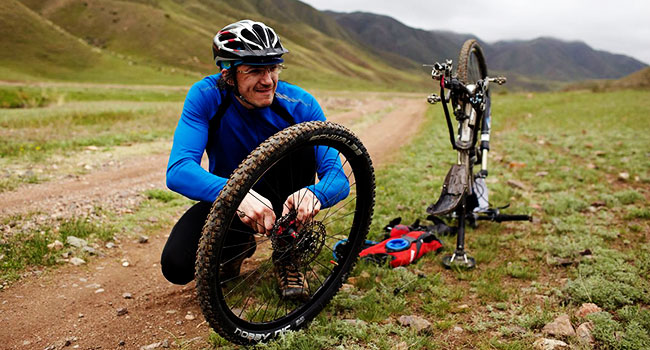
1. Bike Repairing Gear
Having bike repairing gear with you is essential when riding. If your bike breaks down, you have no other choice but to walk, unless you have a kit with you.
Having spare tubes and spare spokes is a good idea because these things can be fairly easy to break. Spare tubes and spare spokes fit easily in your backpack and don’t take up much room. A couple sets of each will keep your mind at ease while taking up little space. Each one is good to have on longer rides, especially if you plan on doing a lot of jumping or riding on rough terrain.
A good multi-tool is a blessing when your bike breaks down. Wring wrenches are important. Also, include a flathead and a Philips head screwdriver for all those parts. You also want Allen keys in standard sizes. Don’t forget the most common spoke tool sizes. Tire levers also come in handy, as well as a chain rivet extractor. A pair of wire cutters and pliers are also
When your tires go flat, you want to be able to reinflate them. Make sure you have a tire pump on hand for this. A tire lever, which is a tool that removes bike tires, is also handy. Removing tires by hand is difficult, so having this tool in your kit is essential. You also want a shock pump to adjust the air pressure inside the spring.
What do you do when you’ve used up your last extra tube? You patch it, of course. Patch kits take up almost no room in your pack and are absolutely necessary when you have no more tubes left. You want to have several patches on hand for this scenario. The best kind is the ones that use a vulcanizing agent because they will hold the longest. The glueless kind isn’t bad, but it won’t last as long.
Having extra brake and derailleur cables is important for one simple reason: your bike can’t work without them. If you don’t have the cables, your bike won’t stop. You don’t want to ride a bike without these cables as it’s dangerous and unnecessary to get on it without them. Have these in your pack as they don’t take up much space and stay safe.
Replacement chain links sure you can continue your journey should your chain break. Your chain is what makes your bike go. Without it, you simply can’t get your bike to propel forward. Having a replacement chain is essential because without it, you simply cannot continue on. This is another piece that doesn’t take up much space and is necessary to have with
The CO2 inflator with cartridges is another important piece of mountain biking parts & gear to have on your travels. It’s a quick way to inflate your tires. If you’re racing and you get a flat, you need to get back on your way as quickly as possible.
viiiPressure gauge
Having a pressure gauge is important because you want to know if your tires are at the pressure they should be at. A tire that’s overinflated will pop and one that’s underinflated will slow you down and be hard to ride CO2 inflator has your back. It will inflate you in seconds and have you back on track before you know it. Having one is essential if you ride quickly
An adjustable wrench is a good tool to have for all of the repair work you may need to do on your bike. It will take the place of other wrenches and make sure you have everything you need for your toolkit. Having one on hand is necessary for a lot of the repair work you may need to do on your bike along the way. Keep one in your pack for anything that may come up on the road.
2. Riding Gear
Riding gear is important in order to keep yourself safe. You want to be sure you don’t get hurt while having fun and exercising. This is why protective mountain biking parts & gear is so important.
A full-face helmet will protect your entire face, not just your head. This will keep everything protected should you go flying off your bike. Your head is important, but you want to keep your face protected too. Just in case you land face first on something, a full-face helmet will protect your full face. It will keep you safe from any cuts and bruises that may result from an accident.
If you decide not to opt for the full-face helmet, protective glasses are your next best option. The eyewear will shield your eyes from bugs and other debris that can come flying up at you during your ride. They also come in sunglasses form to keep your eyes protected from UV rays and to keep you seeing better in the sunlight.
The upper body protector will keep your upper body safe from harm. It will keep you padded. Should you have an accident, it will lessen the blow from the fall and keep you from bruising and bleeding. The upper body protector may keep you from sustaining serious injuries during a fall and get you back on your bike, riding like nothing happened.
Elbow pads keep your elbows safe from harm. Hitting your elbow even lightly is no fun, so imagine hitting it on your way down from a bike. Elbow pads will keep those tender joints from sustaining serious damage due to an accident and will get you back on your bike in no time. They will ensure that your ride doesn’t come to an end due to a broken or sprained elbow.
Gloves keep your hands firmly on your handlebars, reducing the chance of an accident. They also protect your hands should you fall off of your bike, keeping them from scrapes and cuts. This will keep you from having to give up riding for the duration of your cycle. If your hands are too hurt to ride, then you have to walk. However, gloves will help keep that from happening.
Shin guards are another guard that keep a tender part of your body from getting hurt. Much like elbow pads, shin guards keep you from hurting something that is easily hurt. Even slight shocks to your shins are painful, so falling off of your bike and hitting them can be excruciating. Not to mention, you don’t want to cause any breaks in the shin.
viiMudguard
Again, if you opt not to go for the full-face helmet, then a mudguard is a great idea. It will keep mud from splashing up into your face and blinding you. Even a few seconds of blindness can cause an accident, so having a mudguard is a good idea for riding trails. It will keep you from going blind and
3. Safety Gear
Safety gear is important. From getting lost to having a small medical issue, making sure you have the right gear to treat everything is essential.
iLock
Being able to lock your bike up is important. You paid a lot of money for your bike. You don’t want it to be stolen. Getting a lock for it is imperative. If you have to walk away from your bike for any reason, you want to walk away with the ease of mind that it will not walk away too.
A cycling computer displays trip information. It’s basically a bike computer. This is useful to have because you want to know where you’ve been, so you can retrace your steps if you need to. You also want to know how many miles you’ve ridden and how many more you are to go if you’re planning a trip. These computers are useful for many things.
Having a GPS or compass is probably the best idea when riding. This way, if you get lost, you always have a means of finding your way back. These devices are also useful for planning your trip if you don’t know the way entirely. They help you figure out which direction you’re going in and which direction you should go in next. Also, if you’re riding an unfamiliar path, they
The wrist altimeter measures the altitude of your trip. Having one on your wrist is a great idea, especially if you’re riding on mountains. You want to know how high you’re riding. Having an idea of how high you’re going is important for air quality. The higher you go, the thinner the air is going to be. Your breathing will become heavier. So you want to know if you’re
Having a handlebar mirror is important because you need to know what’s going on behind you. Whether it’s another rider coming up behind you or cars that are speeding up on you, having a handlebar mirror is essential. Looking behind you can be dangerous and throw you off balance. Having a mirror to look behind you is much easier and safer.
Having a headlight and taillight is important, especially if you’re riding at times of the day where the light is low. The reflection of the lights on your bike will show other riders and cars that you’re there. The safety of these features is unparalleled. They will keep you safe and ensure that people can see you, even when riding at night.
A first-aid kit is imperative on your riding journey. Should you fall off your bike in an accident, having one of these is essential. You can sterilize your wound and wrap it before you get home, not having to risk infection or letting a wound continue to bleed while being out in the open. It’s important to remember that
An emergency whistle will help keep you safe if you’re in trouble. Should you get lost or anything else should happen, a whistle will alert nearby people that you’re there. The emergency whistle will allow others to come to your aid if you’re hurt or have been attacked (by person or animal). It will also make sure
4. Personal Items
Bringing personal items on your ride is another important aspect of riding. These items will help you on your journey.
You never know when it will get cold. Sometimes your journey takes longer than expected. Bring an extra layer or jacket with you for these times in case it gets cold. You want to be sure you don’t get too cold. This will keep you from being uncomfortable or suffering in the cold weather. Also, if you get lost, you have something to keep you warm until you are found or
The sun can be a killer – literally. Bring sunscreen with you to apply and reapply as necessary. Sunscreen only lasts so long before it wears off, so depending on how long your ride is going to be, and what kind of sunscreen you’re wearing, you’re going to need to keep applying it. Bring some with you in a traveling bottle to have on hand for when you need to apply it again.
Having guidebooks and maps of the area you’re in is a great idea. You never know when your GPS may fail you in the middle of some unknown area. A paper map will never lose signal or run out of batteries. You can always count on the guidebooks to tell you where things are located and on the map to show you the way.
Always make sure you have water bottles with you. Bring extra. You want to be sure you stay hydrated during your trip. Water is an important element of riding. Getting dehydrated will make you sick and can be potentially life-threatening. So make sure you always have a spare bottle on hand, especially if you get lost. This can save your life.
Wet wipes or tissue paper will come in handy for the trip. You can keep your hands and other parts clean with these. If you have an accident that doesn’t necessitate first aid, but you just need to clean yourself off, these will do the trick in no time. Having them is useful for a multitude of reasons.
Always make sure you have your emergency contact card on you at all times. If you have an accident and are found unconscious, this is the only way anyone will be able to reach your family or other emergency contacts. This is especially important if your life is in danger and someone needs to make your medical decisions for you.
Care & Maintenance of Your Mountain Bike
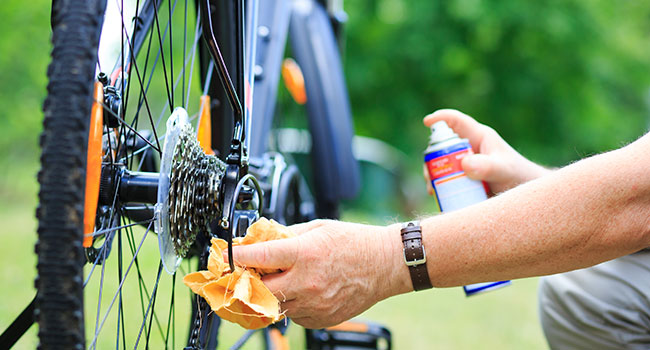
1. Keep your bike clean
Always be sure to keep your bike clean. After a long, hard trip, rinse it down with warm water. Then tackle it with a soapy cloth. Make sure you scrub off all of the dirt and grime off every piece. Get in between all of the spokes. Get your seat, your handlebars, your frame. Be careful of the chain as you don’t want to take all of the greases off. But be sure to get every other piece of the bike. Don’t forget under the seat; dirt collects there too. When you’re done, rinse thoroughly. Don’t leave any soap on the bike. Let it air dry.
2. Check your brakes
Always check your brakes to make sure they’re in good, working order. This doesn’t just mean testing them out. It also means checking the lines to make sure there are no holes in them. Run your fingers over the lines and check for any damages. Then squeeze the brakes and see what happens. If you don’t feel as though the brakes are working the way they should, go have your lines checked out at the bike store. It’s better to be safe than sorry when it comes to your brakes. Just like in a car, your brakes are some of the most important features on your bike. Make sure you upgrade them as necessary. Also, don’t forget to check your brake pads. They’re important too.
3. Adjust your gears
Adjusting the gears on your bike can be a little tricky, depending on how expensive your bike was. The cheaper you bike, the less likely your gears will shift as well. However, they should still shift precisely. If your gears aren’t working properly, you need to have them fixed. Go to your local bike shop to have them fix the problem for you. Generally, problems with gear shifting are triggered by cable friction or tension. However, there are other reasons for gear shifting issues that may have nothing to do with the cable. Inspect your gears often and make sure they switch like they’re supposed to for a smooth ride.
4. Inspect your Wheels
Make sure you inspect your wheels. Check for any leaks that may be flattening your wheels. Also, check the air pressure. The pressure in your tires is important because it will influence the traction on the ground. If the pressure is too high, the tire will cause a loss in traction because it will deflect off the surface of the ground. If the air pressure is too low, you may get the pinch flat or even dented rims. Neither of these is a good thing. You want your air pressure to be at the optimum level in order to get a smooth ride. You can buy a new wheelset from your local bike store if need be.
5. Take Care of your chain
Taking care of your chain is another important aspect of bike maintenance. Your chain is very important to the overall ride on your bike, so make sure that it is in a proper place. Run it through a few times to make sure everything grips like it’s supposed to. Each tooth goes in where it’s supposed to go in. You also want to make sure it’s properly greased. A dry chain will get you nowhere. Do everything you need to do to ensure that your chain is in good working condition and not rusted out. If you notice that it’s time to change it, go ahead.
6. Don’t skimp on servicing
It may seem like a pain, and not worth the money, but you paid a lot of money for your mountain bike, so don’t skimp on the servicing. If your mountain bike has been through a lot of rides, it’s time to get it serviced at your local shop. Just like a car, mountain bikes need servicing. And since you paid as much for your bike as you may for a used car, you want to keep it running. Service it just like you would a car and bring it in for a good look over. You won’t regret it.
Risks Factors of Mountain Biking
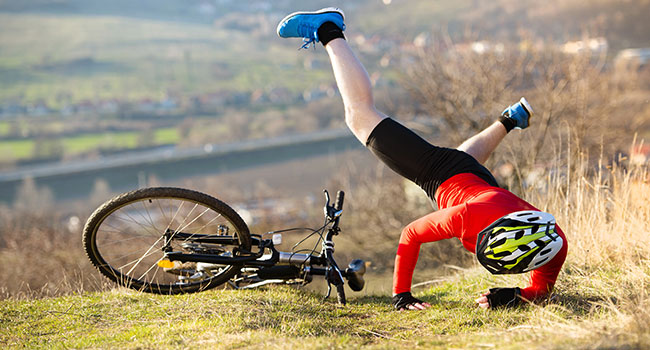
As with any sport, there are risks to mountain biking. Falling off your bike can cause injuries. The injuries to you can be minor such as cuts or bruises and abrasions. They can, however, be major, such as broken bones, spinal injuries, and head contusions. These can result from colliding with trees, rocks, and other objects. Having on protective equipment may help protect against some minor incidents, but may not protect from major accidents. In order to keep yourself safe, you must take some steps. First, don’t ride above your level of experience. Second, make sure you’re fit enough to tackle the course you want to do. And third, keep your bike in good working order. Also, be wary of fatigue. It can cause accidents in a flash. Be aware of this and stop to rest if you’re tired. In addition, remember that a mountain bike needs more maintenance than a regular bike because of all of the abuse it takes.
Environmental Impact
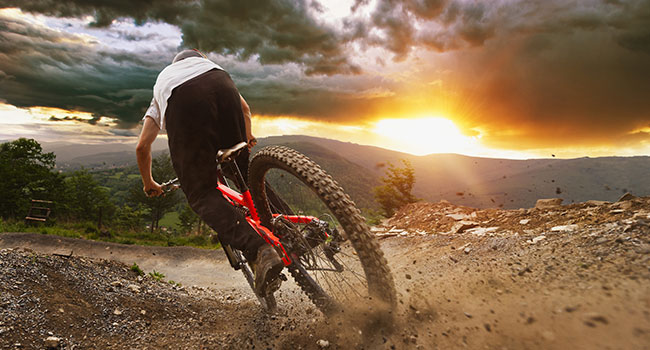
The environmental impact of mountain biking isn’t well understood. This is because it’s a relatively new sport. It seems that mountain biking does contribute to some environmental degradation. For example, mountain biking causes disturbances in vegetation and soil. This is due to the jumping and skidding. However, this can be done by the construction of bridges and trails. Some studies show that mountain biking has no worse impact than that of a hiker. Mountain biking certainly causes less damage than a motorized off-road vehicle or a horse. If you want to minimize the damage caused by your mountain bike, there are a few things you can do to help. First, don’t ride on wet or sensitive trails. Second, don’t go too fast so you don’t have to brake as hard. Third, don’t skid. And lastly, stay on the trail. All of this can help the environment when you’re on your mountain bike.
Mountain biking can be a lot of fun. Now that you know a lot about the mountain biking parts & gear, you can figure out which bike is the best one for you. Whether you want the top bike in the shop or just a cheap bike to start you off with, you know exactly what to look for. There are plenty of bikes to choose from, from the fat bike to the freeride, to the dirt jump and more. No matter which mountain bike is the right one for you, you can rest assured that this sport will endure for a long time. It’s not a fad sport; it’s one that is here to stay.


